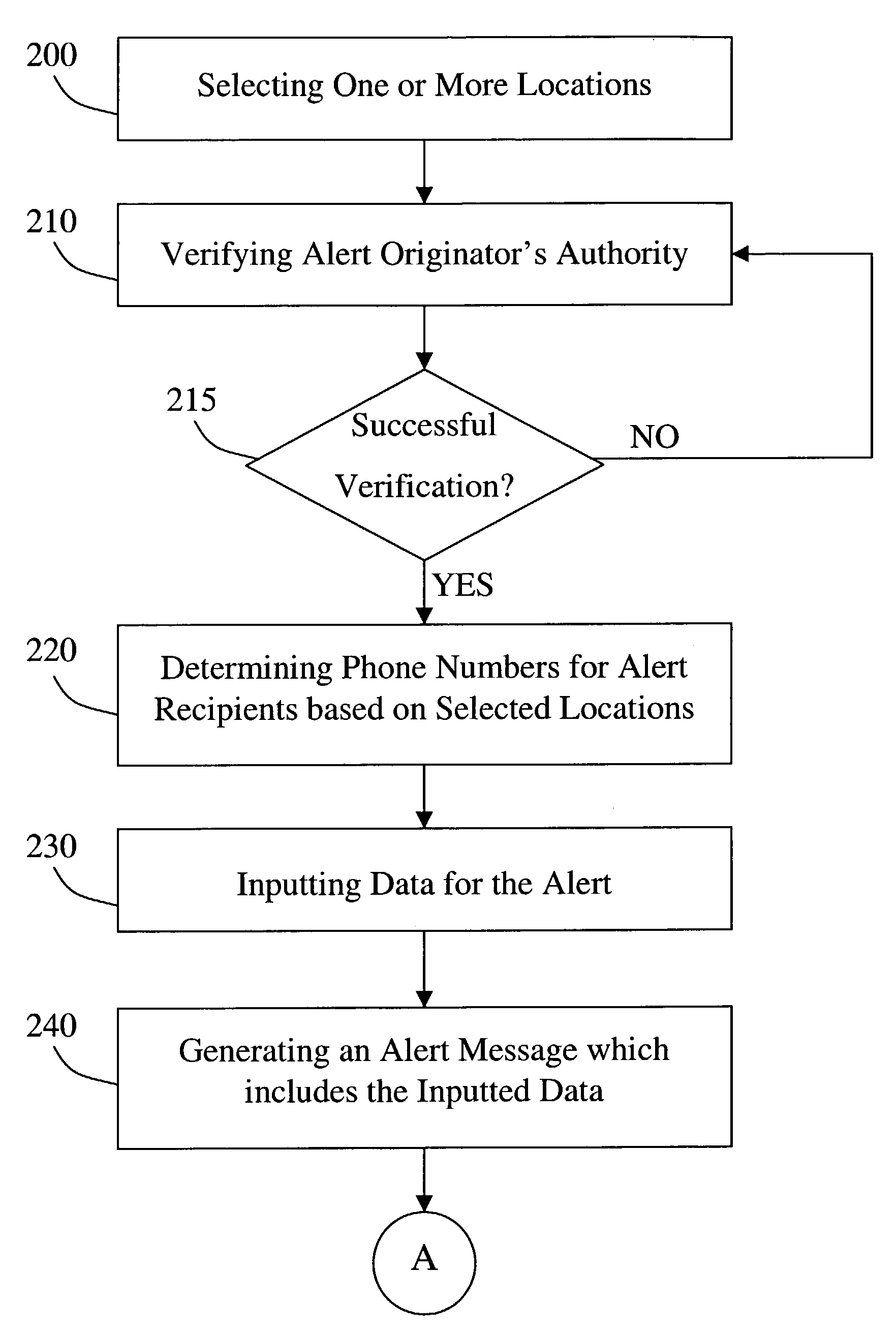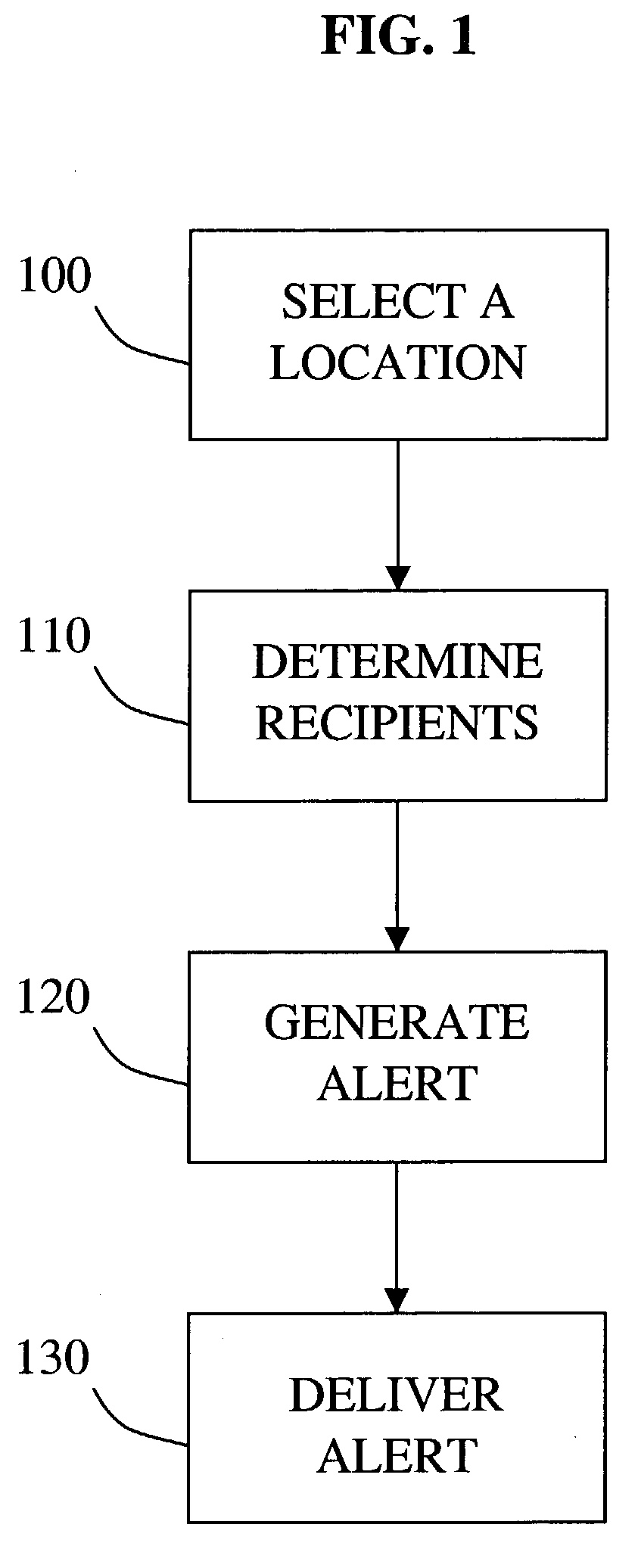Cellular messaging alert method and system
a technology of alert information and cellular messaging, applied in the field of alert systems, can solve the problems of limiting the range of broadcasting systems, affecting the effectiveness of broadcasting alert information to all radios and televisions in a particular location, and affecting the effectiveness of broadcasting alert information to individuals who are not near radios or televisions
- Summary
- Abstract
- Description
- Claims
- Application Information
AI Technical Summary
Problems solved by technology
Method used
Image
Examples
Embodiment Construction
[0041] The following is a detailed description of various illustrative, non-limiting embodiments of the present invention.
[0042] FIG. 1 illustrates a method that can be used by an alert originator, such as a law enforcement agency or an emergency management official, to alert a large percentage of the population in a geographic area of an event, message or individual. Initially, the alert originator selects a location for the alert to encompass (S100). Any manner of data input can be used to select the location.
[0043] Preferably, but not necessarily, a hierarchical series of menus are provided to the alert originator to select the location. For example, a listing of all fifty states is provided. Upon selecting a particular state, a listing of all of the counties in the state is provided. Alternatively, a listing of major cities, major airports, etc. in the state can be provided. Use of a hierarchy of menus provides a simple mechanism for the alert originator to quickly and narrowly ...
PUM
 Login to View More
Login to View More Abstract
Description
Claims
Application Information
 Login to View More
Login to View More - R&D
- Intellectual Property
- Life Sciences
- Materials
- Tech Scout
- Unparalleled Data Quality
- Higher Quality Content
- 60% Fewer Hallucinations
Browse by: Latest US Patents, China's latest patents, Technical Efficacy Thesaurus, Application Domain, Technology Topic, Popular Technical Reports.
© 2025 PatSnap. All rights reserved.Legal|Privacy policy|Modern Slavery Act Transparency Statement|Sitemap|About US| Contact US: help@patsnap.com



